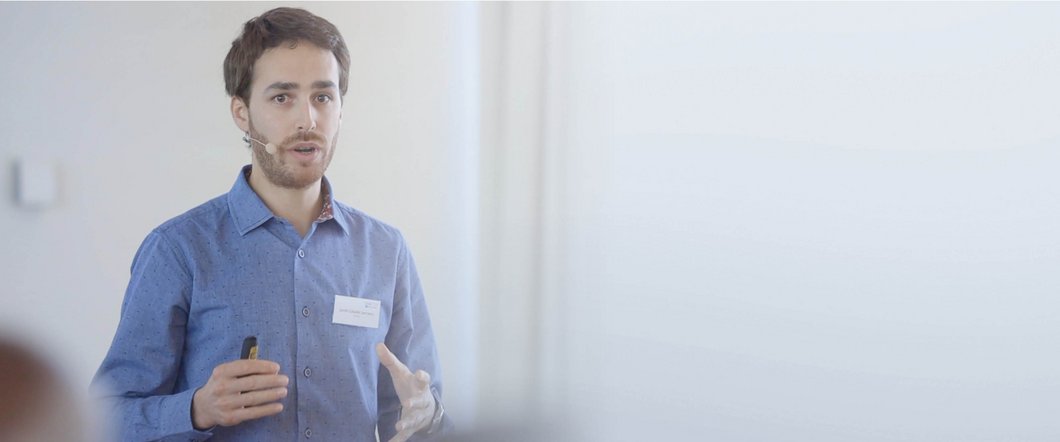How long should a GBR membrane last?


This question has sparked debate among clinicians and researchers alike. A study led by Dr. Jordi Caballé, oral surgeon and postdoctoral researcher at the University of Bern, offers a fresh perspective—one that shifts the focus from long-term degradation to optimal healing timelines as he explains in the video:

Key Takeaways from Dr. Jordi Caballé’s Research on GBR Membranes
In the video, Dr. Jordi Caballé, postdoctoral researcher at the University of Bern and oral surgeon, shares what science reveals about membrane barrier time in Guided Bone Regeneration:
- The periosteum, a natural barrier membrane, is damaged during GBR procedures and temporarily loses its function.
- To prevent soft tissue invasion, collagen membranes are placed as temporary barriers.
- The periosteum regenerates faster than a natural collagen membrane degrades—typically within 4–6 weeks.
- This means the critical need for a barrier function exists only during this short window.
- Natural collagen membranes, such as Geistlich Bio-Gide®, provide sufficient barrier function during this crucial phase.
- Extended barrier time is not necessary—science shows that a well-designed collagen membrane does its job effectively within the natural healing timeline.
In short: Don’t worry about long-term barrier time—what matters is supporting early healing and periosteum regeneration.
Understanding the Natural Barrier: The Role of the Periosteum
To appreciate the function of a membrane, we must first revisit the natural architecture of bone. The periosteum, a thin, vascularized connective tissue layer that covers bone surfaces, acts as a biological barrier in healthy conditions. It plays a central role in bone maintenance and regeneration by harboring osteoprogenitor cells and forming a selective interface between bone and surrounding soft tissues.
However, during surgical interventions like GBR, the periosteum is disrupted. Its barrier function is lost—at least temporarily—creating an opportunity for soft tissue cells to invade the bone defect and compete with osteoblasts for space and nutrients. To exclude soft tissue cells from the bone defect, membranes are used as barriers.

The periosteum regenerates within 4–6 weeks, while a collagen membrane like Geistlich Bio-Gide® protects the site during this critical window.
Barrier Function Timing: What the Research Tells Us
Dr. Caballé’s research highlights a key point: the periosteum heals faster than a natural collagen membrane degrades. In other words, the period during which an external membrane needs to serve as a barrier is relatively short—typically about 4 to 6 weeks.
This finding challenges the belief that longer-lasting membranes necessarily lead to better outcomes. Instead, it suggests that timing the membrane’s barrier function to the healing of the periosteum is what really matters.
A natural collagen membrane—particularly one designed with controlled resorption kinetics—perfectly aligns with this timeline. It protects the regeneration site during the early healing phase, then gradually decomposes as the native periosteum regains its function.
The Balance of Protection and Resorption
Collagen membranes, especially those of porcine origin like Geistlich Bio-Gide®, are engineered to strike a balance between stability and biodegradability. They begin to lose their barrier function after a few weeks, but complete resorption can take several months.
This gradual degradation is not a flaw—it’s a feature. The membrane provides mechanical protection and cell occlusion precisely when it’s needed most, then disappears without interfering with the tissue’s natural remodeling processes. And because it’s fully resorbable, there’s no need for a second intervention, reducing patient discomfort and the risk of complications.
Why Collagen Membranes Lead in Clinical Practice
While various types of barrier membranes exist—from synthetic resorbables to non-resorbable options—the use of natural collagen membranes remains dominant in both clinical practice and literature. Their biocompatibility, ease of use, and predictable behavior in the body make them an ideal choice, especially for procedures requiring a balance of function and flexibility.
Synthetic polymers may provide longer-lasting barriers, but they often come with increased risks of inflammation or require more careful flap management. Non-resorbable membranes, although mechanically robust, necessitate a second surgery for removal—a drawback for both clinicians and patients.
Natural collagen membranes, on the other hand, are:
- Fully resorbable
- Biologically accepted
- Easy to handle
- Timed to match the body’s natural healing processes
It’s no coincidence that collagen membranes like Geistlich Bio-Gide® continue to set the benchmark for clinical outcomes.
A New Regenerative Philosophy
Rather than seeking the membrane with the longest lifespan, clinicians may benefit more from understanding the biological window of opportunity for regeneration. Membranes don’t need to last forever—they just need to last long enough to protect the site while the periosteum recovers and osteogenesis begins.
Dr. Caballé’s findings remind us to trust biology. Healing doesn’t rely on extended artificial protection but on the careful alignment between material science and natural processes.
Final Thoughts: Timing Over Duration
In GBR, timing is everything. The critical barrier period is short, and collagen membranes deliver exactly what is needed—a temporary but sufficient shield during the most vulnerable phase of healing.
By choosing materials that complement the body’s own regenerative rhythm, clinicians can ensure better outcomes without overengineering the solution. And in this context, less can indeed be more—especially when supported by robust science and thoughtful design.
Ready to learn more?
Explore clinical cases and research on Geistlich Bio-Gide®.
References
- Weng et al. Clin Oral Impl Res 2000 (pre-clinical)
- Nakahara et al. Int J Oral Maxillofac Implants. 2016 (pre-clinical)
- Caballé-Serrano et al. J Mech Behav Biomed Mater. 2019
- HASUIKE et. Al In Vivo. 2019 (pre-clinical)
- Simion et. Al. Clin Oral Implants Res. 2007 (pre-clinical)
- Yamada et. Al. Clin Oral Implants Res. 2003 (pre-clinical)
- Caballé-Serrano et al. J Clin Exp Dent. 2018
- Dr. med. dent. Jordi Caballé Serrano. 2020. Movie © Geistlich Biomaterials, Wolhusen Switzerland (this article)
- Rothamel D et al. Clin Oral Implants Res. 2005; 16(3): 369-378 (Pre-clinical study)
- Gielkens PFM et al. Clin Oral Implants Res. 2008; 19: 516-521 (Pre-clinical study)
- Rothamel D et al. Int J Oral Maxillofac Implants. 2012; 27(1): 146-54 (Pre-clinical study)

Dr. Jordi Caballé-Serrano
Universitat Internacional de Catalunya |
UIC · Department of Oral and Maxillofacial Surgery
